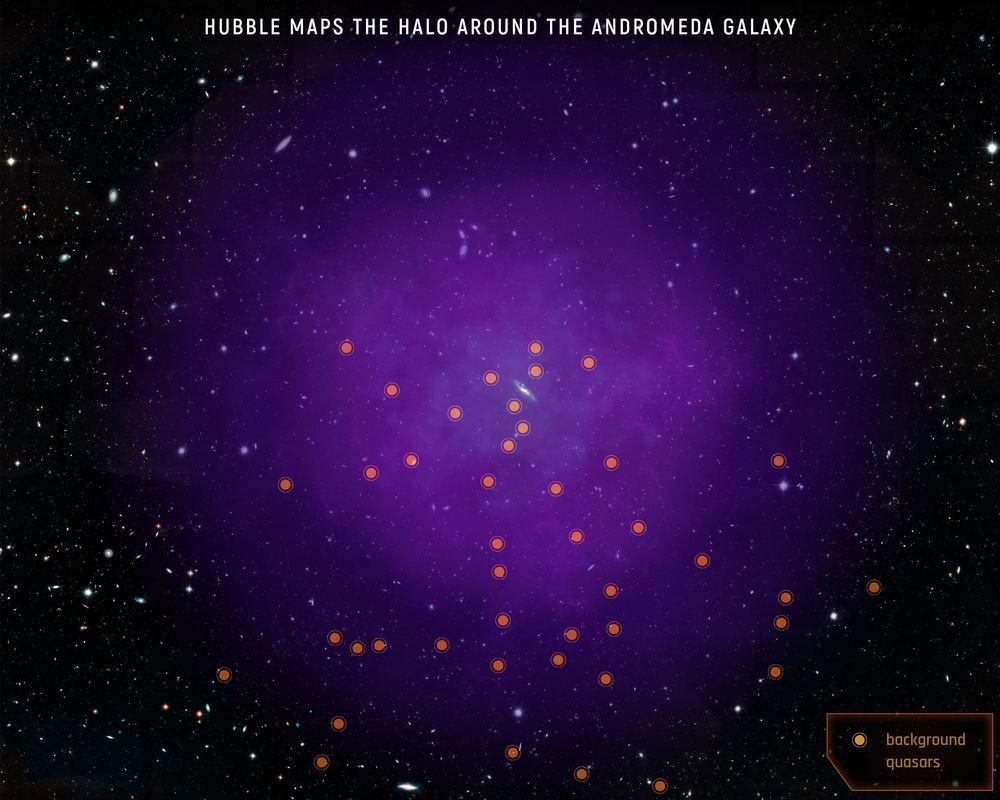In a landmark study, scientists using NASA’s Hubble Space Telescope have mapped the immense envelope of gas, called a halo, surrounding the Andromeda galaxy, our nearest large galactic neighbor. Scientists were surprised to find that this tenuous, nearly invisible halo of diffuse plasma extends 1.3 million light-years from the galaxy—about halfway to our Milky Way—and as far as 2 million light-years in some directions. This means that Andromeda’s halo is already bumping into the halo of our own galaxy.
They also found that the halo has a layered structure, with two main nested and distinct shells of gas. This is the most comprehensive study of a halo surrounding a galaxy.
“Understanding the huge halos of gas surrounding galaxies is immensely important,” explained co-investigator Samantha Berek of Yale University in New Haven, Connecticut. “This reservoir of gas contains fuel for future star formation within the galaxy, as well as outflows from events such as supernovae. It’s full of clues regarding the past and future evolution of the galaxy, and we’re finally able to study it in great detail in our closest galactic neighbor.”









Comments are closed.